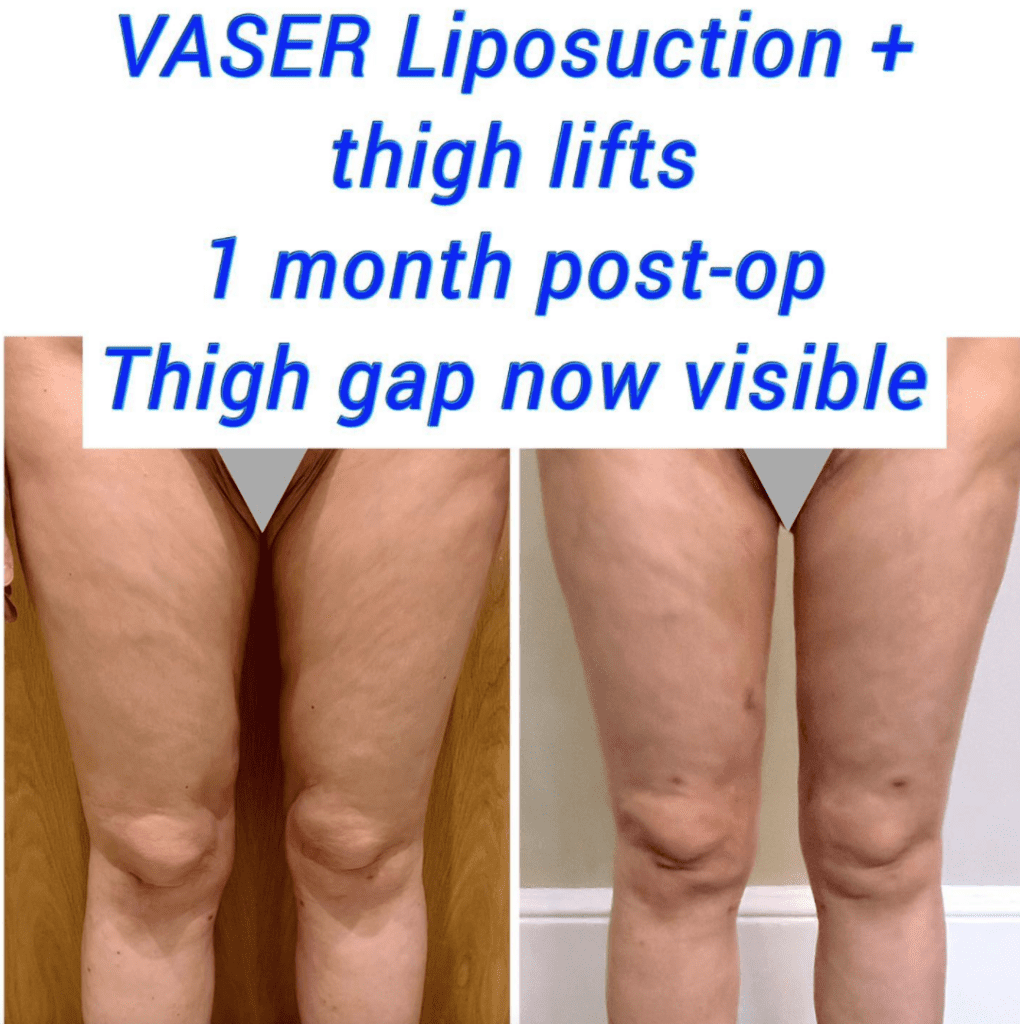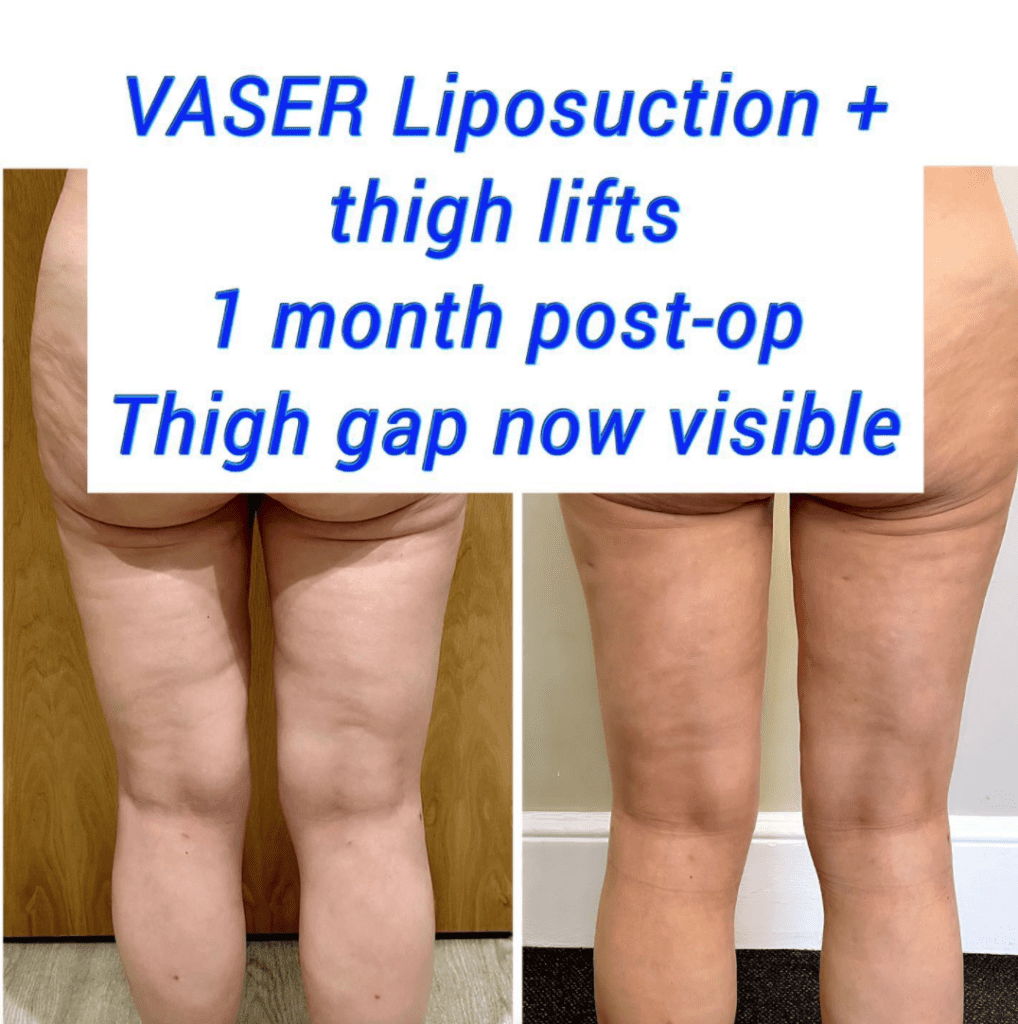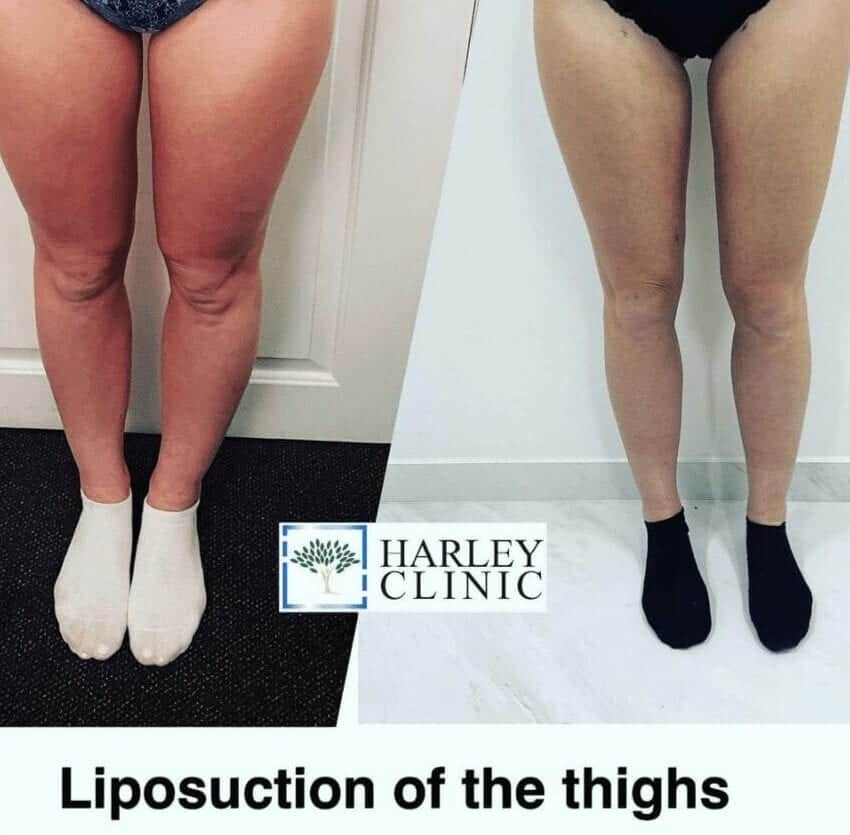Thigh lift surgery or thighplasty is a common procedure to help tighten loose skin on the thighs. For many, the thighs are a problem area, and a thigh lift may be a suitable option if the area has stopped responding to exercise and diet. Like with any other cosmetic surgery, there are aftercare tips that you need to follow to help speed up recovery.
A Quick Overview of Thigh Lift Surgery
A thigh lift is a surgical procedure that removes excess skin and fat on the thighs. Thighs are one of the most difficult areas to lose fat and tone up. After significant weight loss, it’s normal to have sagging skin on your thighs. A thigh lift aims to lift, tighten and remove sagging skin and fat from the thighs.
If you’re considering getting a thigh lift, doctors recommend that you maintain a steady weight for at least six months. Weight fluctuations can interfere with the results of the procedure. Thigh lift surgery is performed under general anaesthetic. The procedure can take between 90 minutes to 3 hours.
Sometimes, when the skin is stretched over an extended period of time, the elastin and collagen become damaged. This is why your skin may not snap back after significant weight loss, as the proteins that help your skin return to its original shape are damaged. In this case, you may notice that skin hangs on the body and lacks firmness.
After losing a significant amount of weight, it’s common to have loose skin in multiple areas. Often, patients combine a thigh lift with other procedures, such as an arm lift, tummy tuck, and breast lifts, for total body rejuvenation.
Thigh Lift Before and After Photos UK


Types of Thigh Lift Surgery
Thigh lift surgery helps tighten loose skin. Your surgeon will determine the type of thigh lift surgery best suitable for you. Here are the different types of thigh lift surgery.
Inner Thigh Lift Surgery (Medial Thigh Lift)
An inner thigh lift or medial thigh lift aims at addressing sagging skin on the inner thighs. An incision is made from the groin down to the knee and towards the back of the thigh area. Excess skin plus fat is then removed, and the remaining skin is sutured together.
Medial Thigh Lift Recovery Time
You can expect recovery from a medial thigh lift to take between 4 to 6 weeks. A medial thigh lift is one of the most common types of thigh lift. It’s no surprise considering that the inner thigh can be tough to tone.
Mini Thigh Lift
A mini thigh lift targets loose skin on the upper part of the inner thigh. A mini thighplasty involves fewer incisions, and scarring is minimal. Your surgeon will determine if you qualify for a mini thigh lift.
Outer/Bilateral Thigh Lift
This type of thigh lift aims at addressing excess skin and fat on the outer thigh. The surgeon makes an incision from the groin area down towards the hip and lower back. Excess skin and fat are then removed, and the skin sutured together.
Vertical Thigh Lift
If you have a lot of sagging skin on all areas of the thighs, your surgeon may recommend you have a vertical thigh lift. The surgery involves making larger incisions that extend to the knees. This type of procedure carries a higher risk of developing complications. The recovery period is also longer.
Spiral Lift
A spiral lift is more intense than your standard thigh lift. It’s also known as a total thigh lift. Essentially, with a spiral lift, you target the front, back, inner, and outer thighs all in one procedure. It can also target the buttocks and hip region. The body contouring procedure takes elements of thigh lift surgery, liposuction, and buttock enhancement. It may also include some skin tightening techniques. A thigh lift is a key part of a spiral lift but encompasses more.
Thigh Lift with Liposuction
Sometimes, your doctor may recommend combining a thigh lift with liposuction. This is especially if your skin elasticity is poor.

Thigh Lift Recovery
Immediately after the surgery, you will be in some discomfort for the first 24 to 48 hours. Your surgeon will wrap your thighs with compressive wraps and talk to you about pain management. The recovery time for thigh lift surgery can vary from one person to another. Most patients need to take it easy for 2-3 weeks after their surgery before returning to regular activities in approximately six weeks.
There will be visible bruising and swelling during the first two weeks. Drain tubes can be placed at the incision site. Your surgeon will advise on when to remove them. To enhance the results, you need to keep the legs elevated during the first few days of recovery. You can resume showering after a few days but avoid vigorous activities for the first 4 weeks.
Thigh Lift Scars
As with any cosmetic procedure that requires an incision, there will be some scarring. Your thigh lift scars will depend on the type of thigh lift, as the incision placement can differ. It’s normal for scars to look red, raised, and even a little angry after your procedure. Any scarring will be the most visible in the first 6 months. Over time, thigh lift scars will turn to pink and then fade. It’s important to keep fresh scars away from direct sunlight as it can darken scars permanently.
The exact scar placement can change, but in general, thigh lift scars are near your groin crease and along the upper thigh. There could be less or more scarring depending on the extent of your thigh lift surgery.
7 Aftercare Tips for Thigh Lift Surgery Recovery
When you wake up after thigh lift surgery, the thighs can feel sore as you would expect. It can be uncomfortable to walk, and you shouldn’t drive for the next 10 days. There are things that you can do to help ease your recovery, reduce discomfort, and start the healing process. Here are 7 aftercare tips for thigh lift surgery to get you through each stage of recovery.
1. Rest, Hydrate and Eat Well
After surgery, it’s essential that you rest, hydrate and eat well. Focus on eating plenty of proteins, fruits, vegetables, and whole grains. This gives your body all the nutrients you need to heal well. Continue to drink plenty of water also. Proper hydration helps prevent complications and speeds up healing.

2. Take Short Walks Around the House
While you should avoid excess movement and take it easy, you need to start moving as soon as possible. A short walk down the hallway, in the garden or around the house promotes blood circulation and reduces the risk of clotting.
3. Wear Compression Garments
Your swelling and bruising will be most prominent roughly 2-3 days following your surgery. You should wear your compression garment as needed, as this will help reduce fluid build-up and ease swelling. The compression garment also helps to protect against any damage to your incisions.
4. Don’t Submerge Your Incisions
You want to avoid submerging your incisions during the recovery process. That means no bathing or swimming. Instead, you should be able to start showering two days after your surgery.
5. Be Careful Sitting, Standing, and Walking
Because you have incisions in the thigh area, you need to be careful when moving. Sitting, standing, and walking can pull the area. In general, you need to limit your movement in the first couple of weeks. Be aware of any tension when you bend, sit, walk, and listen to your body.
6. Avoid Smoking and Alcohol
Smoking can impact the wound healing process. It’s also a significant risk factor for poor scarring. Research shows that smokers have a higher risk of developing complications after surgery. Avoid smoking after your surgery to maximise results and reduce the risk of complications.
Alcohol is a blood thinner, which could result in excessive bleeding before, during, or after the procedure. Most plastic surgeons recommend that patients avoid alcohol 2 weeks before and after cosmetic surgery. This is just a general guideline; your surgeon will give you exact instructions to follow for your safety.
7. Follow Your Surgeon’s Instructions
Finally, you must follow your surgeon’s instructions. You may wake up with drains to help drain fluids and reduce swelling. Your plastic surgeon will provide clear instructions on how you can shower, manage pain, and use the drains. You must stick to your aftercare plan. This helps promote healing and speeds up the recovery journey.
Thigh Lift Surgery Recovery Q&A
How long does it take to recover from a thigh lift?
It takes about 6 to 8 weeks to fully recover from a thigh lift. However, after 2 to 3 weeks, most patients are often able to carry out light activities. It is important to note that the details of recovery from a thigh lift, also known as thighplasty, often vary from patient to patient, especially when a patient undergoes several procedures at once. For example, some patients combine a thigh lift with other procedures, such as a tummy tuck.
Can you walk after a thigh lift?
It may be a challenge to walk immediately after a thigh lift surgery. In addition, you may require help to work, especially 2 to 3 days after the procedure. You may feel like this for a few days, after which most patients can get up and walk independently. As one of the top surgical procedures in 2021, patients recovering from a thigh lift are usually advised to engage in light walking and avoid running so they don’t strain the healing tissues.
How long after a thigh lift can you walk?
You can be able to walk effectively without support 2 to 4 weeks after undergoing a thigh lift. However, this is often a result of continuous slow, gentle movements and for longer times. These movements include simple exercises provided by your surgeon to facilitate the stretching of the different sides of your legs.

What is recovery like after a thigh lift?
With adequate, appropriate aftercare, the recovery after a thigh lift can be smooth without complications. Various steps are taken to ensure that the recovery is uninterrupted, including placing dressing against the incisions to ease the swelling, inserting a tube to help drain excess fluids, and recommending wearing a compression garment.
How long do I need to wear a compression garment after a thigh lift?
A compression garment is essential to recovery after a thigh lift. Therefore, when it comes to wearing a compression garment, most surgeons recommend you wear it day and night, especially during the first two weeks. However, this period often varies depending on the extent of the procedure and the patient. With time, you may be instructed to wear it half a day, especially 3 to 6 weeks after the procedure.
How should you lay after a thigh lift?
Maintaining a proper poster day and night, especially of the lower body, is vital in the recovery from a thigh lift. This is because it helps prevent the risk of complications and discomfort. Therefore, after a thigh lift, you should ensure that you modify the sitting, standing, walking, and sleeping positions in line with the recommendations provided by your surgeon. This will ensure that all incisions remain in place and there is stress exerted on the manipulated sections. In most cases, patients are recommended to sleep with their upper body and legs slightly raised.
Thigh Lift London at The Harley Clinic
The thigh region is a problem area after losing a considerable amount of weight. It can leave you with loose skin that can take a toll on your confidence. If your thighs bother you, talk to your surgeon about thigh lift surgery. It’s important that you have all your questions answered and your concerns addressed.
If you’re considering thigh lift surgery, contact the team at the Harley Clinic and schedule a consultation.













